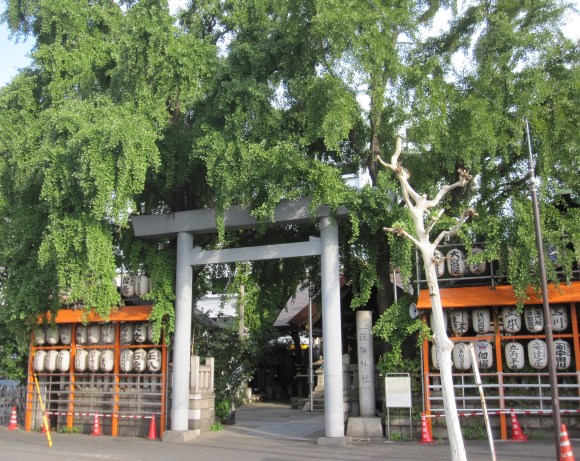
The other day, I woke up and immediately had a craving for sushi. In and of itself, that’s not really anything remarkable, since “Man, I could really go for some good sushi,” is one of my first fully formed thoughts on just about any given morning.
Not one to deny my heart its truest desires, I headed to Tokyo’s Tsukiji, home of the world’s biggest seafood market and some of Japan’s best sushi restaurants. I ducked into one and polished off a bowl of sliced tuna and salmon, and, still wrapped in the lingering effects of my food coma, went for a rambling stroll around the neighborhood.
Since I wasn’t looking for food anymore, my eyes ended up being drawn to a shrine I’d never noticed before. I stepped onto the grounds, where I found a monument to the souls of all the fish whose lives supply Japan with sushi.
Namiyoke Inari Shrine wasn’t established specifically for this purpose, nor is the sushi monument its primary claim to fame. That honor goes to the two giant lions’ heads housed there, which are both over 150 years old and are paraded around the neighborhood in an annual festival each July.
But while the sushi monument may not be as dynamic in appearance, it arguably has the deeper significance.
▼ Sushitzuka, or Grave of Sushi, is carved into the stone.
In Japan, it’s customary to say “itadakimasu” before you start eating, whether you’re about to enjoy a seven-course feast or a bite-sized snack. To people with a Christian background, it might seem a little like saying grace, but the phrase itadakimasu isn’t a prayer. It just means, “I will receive.”
But just what is it soon-to-be diners are receiving? One school of thought holds that the phrase shows gratitude to the cook or purchaser and means, “I will receive the food that you have prepared for me.” Another belief, though, is that itadakimasu is a sign of respect towards the animals and plants that nourish us. In other words, the context is, “I will receive your life.”
With over 700,000 metric tons of seafood moving through the Tsukiji fish market each year, Japan is receiving a lot of aquatic life. Looked at from that perspective, a simple memorial is the least mankind can do to say, “Hey, thanks for letting us eat you.”
Of course, not all the fish sold at Tsukiji is made into sushi. A lot of it ends up as sashimi, grilled, or stewed. So to make sure every base is covered, there’s also a stone marking The Grave of Fish.
Some of you might be wondering who paid for these markers. After all, when we talk about “the bounty of the sea,” we’re not usually referring to financial assets. Are the relatives of the deceased fish purchasing these memorial stones with sunken pirate gold?
Actually, merchants, wholesalers, and other businesses are the ones who footed the bill. Remember that huge quantity of seafood that gets sold at Tsukiji? It translates out to over 600 billion yen (US $555 million) in sales during the year. It’s not just diners who’re thankful for all that tasty fish, but the thousands of people whose livelihoods depend on it, too.
That’s also part of the reason why the monuments are extra thorough. Just like there’s an extra stone for non-sushi fish, there’s also one for shrimp.
If you’ve ever enjoyed a set of mixed tempura (and if you haven’t you’re missing out on one of the highest forms of fried food, which is saying quite a lot), then you know tempura shrimp are usually the stars of the meal. It’s such a popular ingredient that there’s a second, smaller shrimp memorial for those used to make tempura, seen on the left here.
Anglerfish is another high value-added menu item, so it gets a monument too.
As kind as the sentiment is behind all of these, though, visitors who can’t read Japanese are likely to pass by without any understanding of the stones’ meaning. You can’t say that about this one, though.
Eggs have long been the friend of sushi neophytes who aren’t quite ready to make the leap into eating raw fish. Japanese-style tamagoyaki fried egg on a stick is also a sleeper hit of the Tsukiji food stall scene, hence its inclusion here.
Namiyoke Inari Shrine is located at the end of the street serving as the edge of Tsukiji’s Outer Market, and just steps away from the gate to the Inner Market. So if you find yourself in the neighborhood and want to do something to say thanks for, and to, all the fish, consider stopping by and tossing a five-yen coin in the collection box.
Shrine information
Namiyoke Inari Shrine / 波除稲荷神社
Address: Tokyo-to, Chuo-ku, Tsukiji 6-20-37
東京都中央区築地6-20-37
Website
Photos: RocketNews24

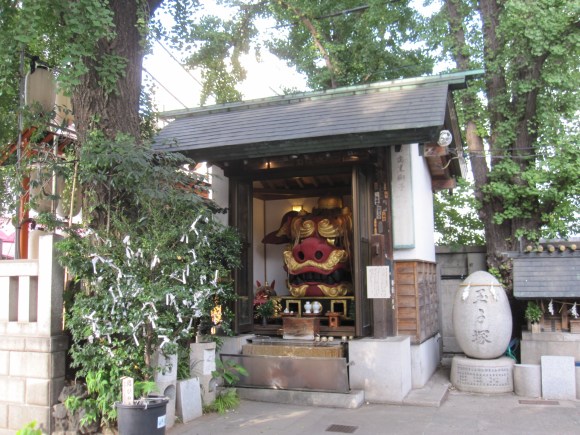
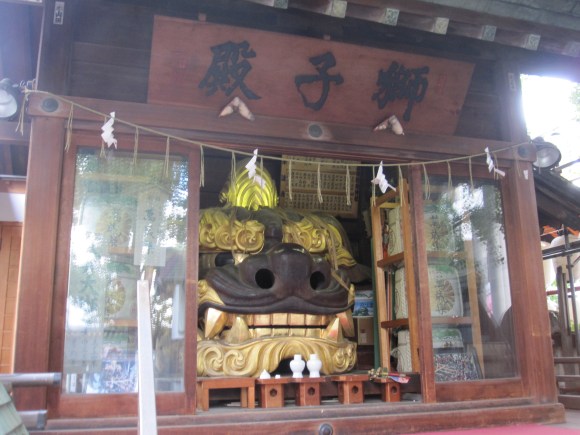
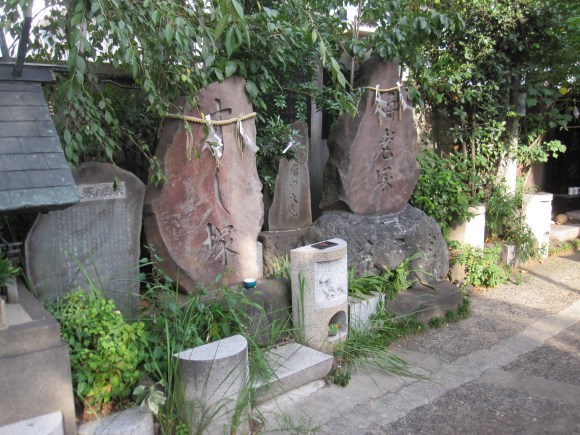
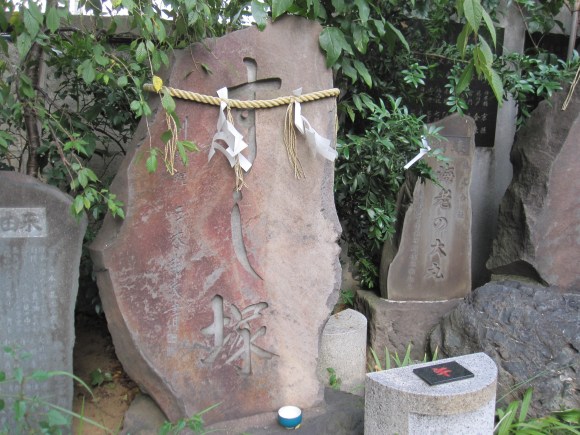
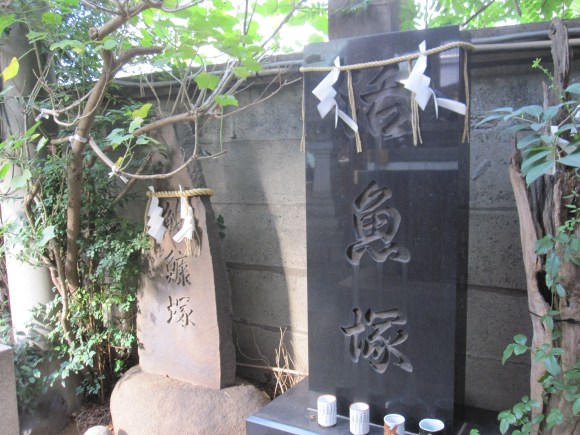
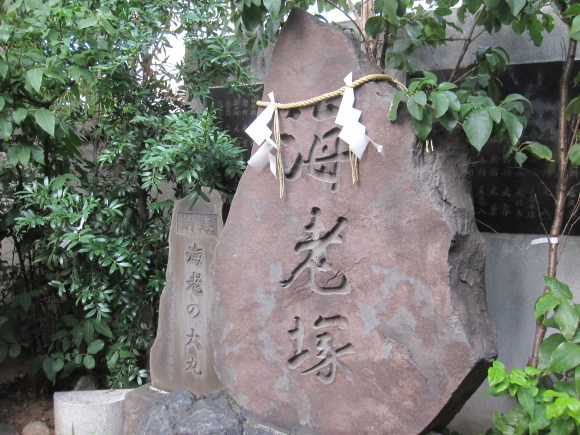
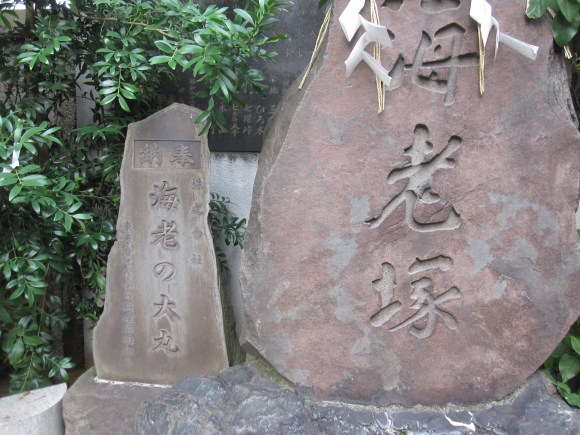
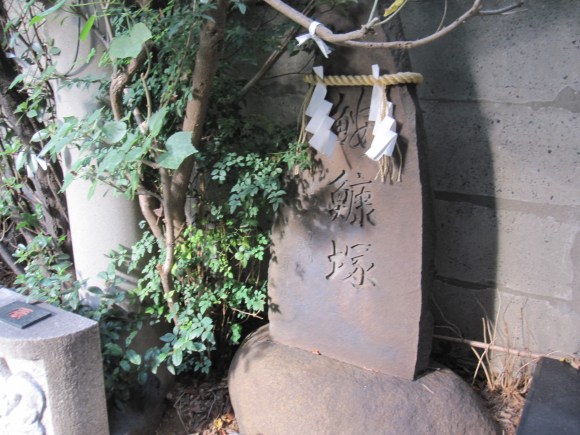
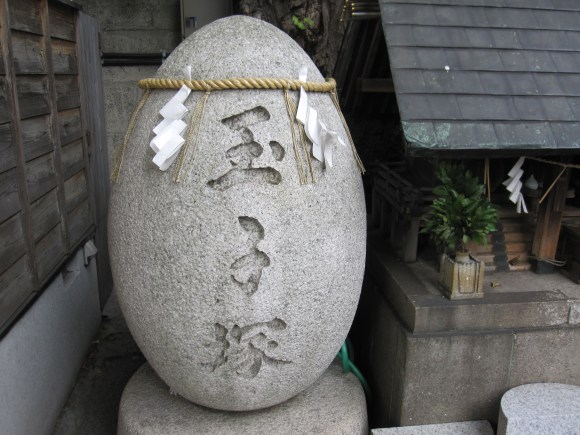
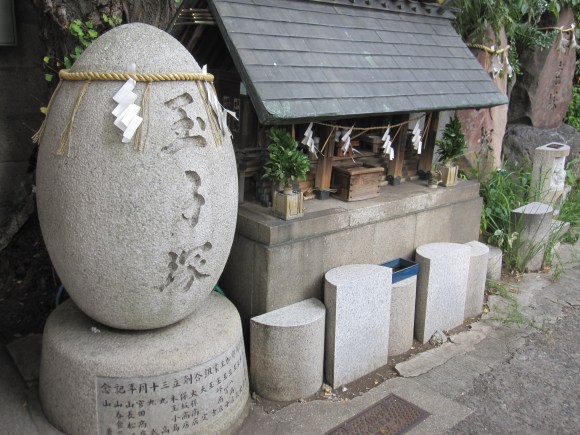
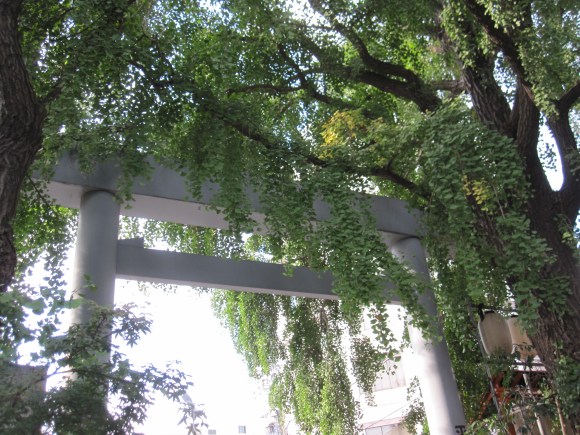
 Restaurants, Roads, Rats: How has Tsukiji changed after the fish market move?
Restaurants, Roads, Rats: How has Tsukiji changed after the fish market move? With its Inner Market closed down, we stop by Tsukiji to see how Tokyo’s sushi mecca is coping
With its Inner Market closed down, we stop by Tsukiji to see how Tokyo’s sushi mecca is coping How to have a great meal at conveyer belt sushi chain Kura Sushi even if you hate raw fish
How to have a great meal at conveyer belt sushi chain Kura Sushi even if you hate raw fish Tokyo braces for potential rat infestation as Tsukiji fish market closes
Tokyo braces for potential rat infestation as Tsukiji fish market closes Four things you should order at rotating sushi restaurant Sushiro if you don’t eat raw fish
Four things you should order at rotating sushi restaurant Sushiro if you don’t eat raw fish Non-tourist trap fish market in northeastern Japan captures our hearts with amazing sashimi
Non-tourist trap fish market in northeastern Japan captures our hearts with amazing sashimi Kyoto becomes City of Yokai, with Night Parade of One Hundred Demons festival this autumn
Kyoto becomes City of Yokai, with Night Parade of One Hundred Demons festival this autumn Japan’s newest life-size Gundam is finished, receives Shinto blessing in Osaka【Video】
Japan’s newest life-size Gundam is finished, receives Shinto blessing in Osaka【Video】 Chinese drivers flocking to Japan for quick and easy route to international licenses
Chinese drivers flocking to Japan for quick and easy route to international licenses One of Japan’s most awesome rail passes, the Seishun 18 Ticket, just got a lot less awesome
One of Japan’s most awesome rail passes, the Seishun 18 Ticket, just got a lot less awesome No train, no hotel – How to do an overnight bus trip to Kanazawa from Tokyo – Part 1【Photos】
No train, no hotel – How to do an overnight bus trip to Kanazawa from Tokyo – Part 1【Photos】 McDonald’s Japan debuts new anime girl mascot character with incredibly long name
McDonald’s Japan debuts new anime girl mascot character with incredibly long name Korean basketball coach humiliates player live on TV, tapes his mouth shut
Korean basketball coach humiliates player live on TV, tapes his mouth shut We try a delicious hidden gem in Fukuoka, unknown to even Japanese people
We try a delicious hidden gem in Fukuoka, unknown to even Japanese people Studio Ghibli releases new “Butterflies in the Forest” Totoro towels
Studio Ghibli releases new “Butterflies in the Forest” Totoro towels What’s the deal with akebi, the perfectly purple, alien-like fruit that’s in season now in Japan?
What’s the deal with akebi, the perfectly purple, alien-like fruit that’s in season now in Japan? Totoro, Calcifer, other Ghibli stars returning as humidifiers ahead of Japan’s dry winter days【Pics】
Totoro, Calcifer, other Ghibli stars returning as humidifiers ahead of Japan’s dry winter days【Pics】 Is downtown Tokyo’s crazy cheap 290-yen bento boxed lunch shop still around, and is it still cheap?
Is downtown Tokyo’s crazy cheap 290-yen bento boxed lunch shop still around, and is it still cheap? Meet the kind Japanese grandpa who takes photos for tourists at the Hachiko statue in Shibuya
Meet the kind Japanese grandpa who takes photos for tourists at the Hachiko statue in Shibuya Studio Ghibli releases new mug tumblers featuring anime movie characters
Studio Ghibli releases new mug tumblers featuring anime movie characters How to power up the coolest cheap souvenir from Nintendo’s official shop with a trip to Daiso
How to power up the coolest cheap souvenir from Nintendo’s official shop with a trip to Daiso Why was the Lithuanian ambassador to Japan working in a fast food beef bowl joint in Tokyo?
Why was the Lithuanian ambassador to Japan working in a fast food beef bowl joint in Tokyo? Line of foreign tourists leads us to Akihabara’s meatiest fatty ramen【Taste test】
Line of foreign tourists leads us to Akihabara’s meatiest fatty ramen【Taste test】 Japanese convenience store Family Mart announces abolishment of eat-in spaces
Japanese convenience store Family Mart announces abolishment of eat-in spaces Studio Ghibli releases new insect whistle necklace from Nausicaä of the Valley of the Wind
Studio Ghibli releases new insect whistle necklace from Nausicaä of the Valley of the Wind Totoro sequel anime Mei and the Baby Catbus will screen at Ghibli Park this winter
Totoro sequel anime Mei and the Baby Catbus will screen at Ghibli Park this winter Starbucks Japan unveils Halloween Frappuccino for 2024, and it’s like drinking a magic spell
Starbucks Japan unveils Halloween Frappuccino for 2024, and it’s like drinking a magic spell Evangelion creator Hideaki Anno returning to anime with new project for 50-year-old franchise
Evangelion creator Hideaki Anno returning to anime with new project for 50-year-old franchise Studio Ghibli releases new Howl’s Moving Castle goods that capture the magic from the anime movie
Studio Ghibli releases new Howl’s Moving Castle goods that capture the magic from the anime movie Adult Jam Bread causes a stir at store in Tokyo
Adult Jam Bread causes a stir at store in Tokyo Right now is the peak time to go to Tokyo’s most-beautiful-view beer garden【Photos】
Right now is the peak time to go to Tokyo’s most-beautiful-view beer garden【Photos】 Pizza Hut adds a “Guilty Secret” sandwich to its menu for a limited time
Pizza Hut adds a “Guilty Secret” sandwich to its menu for a limited time McDonald’s new Happy Meals offer up cute and practical Sanrio lifestyle goods
McDonald’s new Happy Meals offer up cute and practical Sanrio lifestyle goods Foreign tourists on Shinkansen bullet train break suitcase etiquette, angering local passengers
Foreign tourists on Shinkansen bullet train break suitcase etiquette, angering local passengers [Deleted] Article written for April Fool’s Day 2018
[Deleted] Article written for April Fool’s Day 2018 Japanese government to make first change to romanization spelling rules since the 1950s
Japanese government to make first change to romanization spelling rules since the 1950s Foreigner’s request for help in Tokyo makes us sad for the state of society
Foreigner’s request for help in Tokyo makes us sad for the state of society Ghibli founders Toshio Suzuki and Hayao Miyazaki contribute to Japanese whisky Totoro label design
Ghibli founders Toshio Suzuki and Hayao Miyazaki contribute to Japanese whisky Totoro label design Tokyo’s most famous Starbucks is closed
Tokyo’s most famous Starbucks is closed Princesses, fruits, and blacksmiths: Study reveals the 30 most unusual family names in Japan
Princesses, fruits, and blacksmiths: Study reveals the 30 most unusual family names in Japan Doraemon found buried at sea as scene from 1993 anime becomes real life【Photos】
Doraemon found buried at sea as scene from 1993 anime becomes real life【Photos】 An Italian take on a Japanese classic, but do people in Japan consider it sushi?
An Italian take on a Japanese classic, but do people in Japan consider it sushi? Carb-free sushi? Japanese sushi restaurant ditches the rice in its new menu items
Carb-free sushi? Japanese sushi restaurant ditches the rice in its new menu items Japanese people list their top ten fish, and tuna isn’t number one
Japanese people list their top ten fish, and tuna isn’t number one Our Japanese-language writers taste and compare sushi from around the world
Our Japanese-language writers taste and compare sushi from around the world Japanese conveyor belt sushi restaurant chain makes sushi with the help of artificial intelligence
Japanese conveyor belt sushi restaurant chain makes sushi with the help of artificial intelligence Japanese graves and Shinto shrines under attack by bears for their sweet, sweet honey
Japanese graves and Shinto shrines under attack by bears for their sweet, sweet honey Tokyo has a BLUE sushi restaurant with all-you-can-eat BLUE sushi for just 400 yen (US$3.50)
Tokyo has a BLUE sushi restaurant with all-you-can-eat BLUE sushi for just 400 yen (US$3.50) Is it gross to eat sushi that the chef pressed with his bare hands?【Survey】
Is it gross to eat sushi that the chef pressed with his bare hands?【Survey】 Should you add wasabi to your soy sauce at a sushi restaurant?
Should you add wasabi to your soy sauce at a sushi restaurant? Which conveyor belt sushi place’s chawanmushi egg custard is the best? We investigate【Taste Test】
Which conveyor belt sushi place’s chawanmushi egg custard is the best? We investigate【Taste Test】 Huge fire breaks out at Tokyo’s world-famous Tsukiji Fish Market【Videos, photos】
Huge fire breaks out at Tokyo’s world-famous Tsukiji Fish Market【Videos, photos】 Kura Burger: Japanese sushi chain restaurant offers burgers in Tokyo for a limited time
Kura Burger: Japanese sushi chain restaurant offers burgers in Tokyo for a limited time Tsukiji alternative – Tokyo has a second fish market, and it turns out it’s awesome too
Tsukiji alternative – Tokyo has a second fish market, and it turns out it’s awesome too Should you dip your egg sushi in soy sauce before you eat it? Survey asks Japanese diners
Should you dip your egg sushi in soy sauce before you eat it? Survey asks Japanese diners Tokyo’s Tsukiji Hongan Temple opens a cafe, breakfast set has 16 side dishes!
Tokyo’s Tsukiji Hongan Temple opens a cafe, breakfast set has 16 side dishes!
Leave a Reply